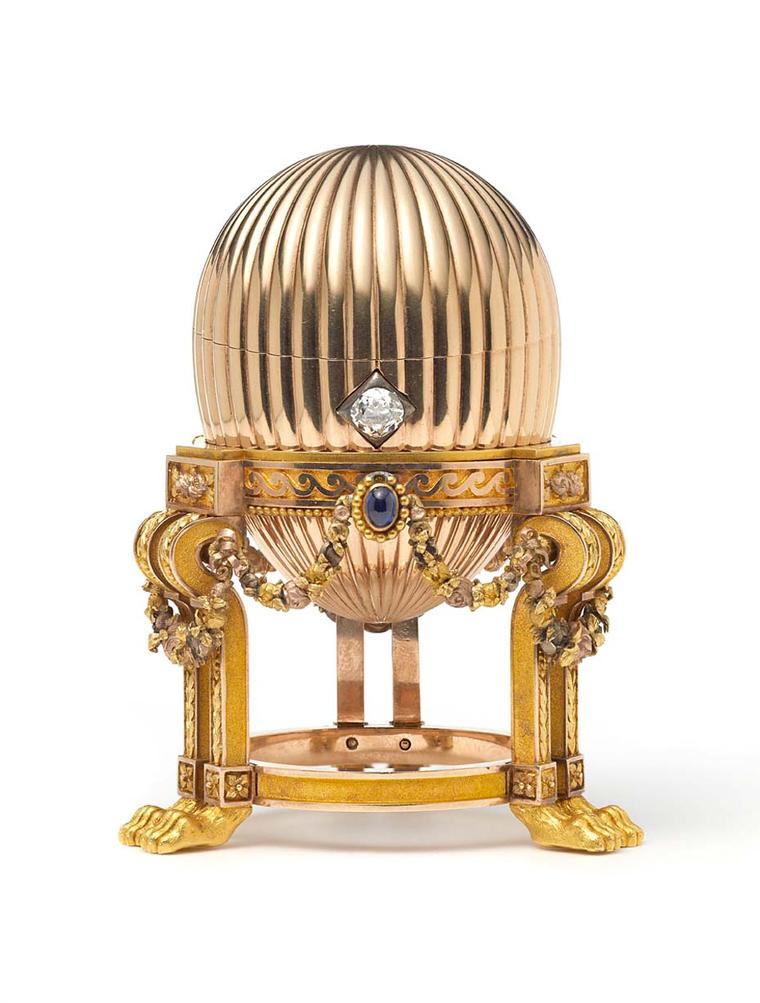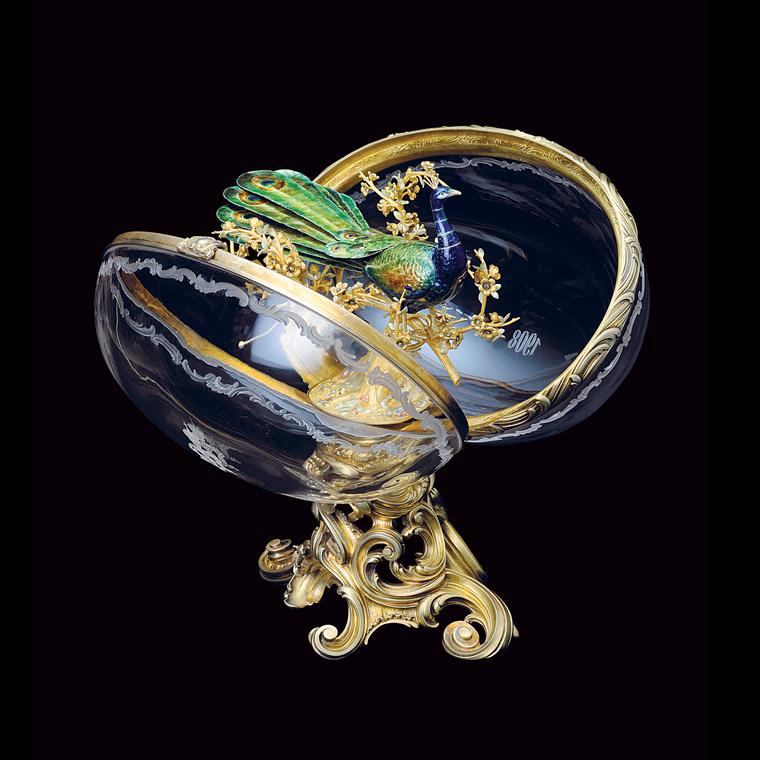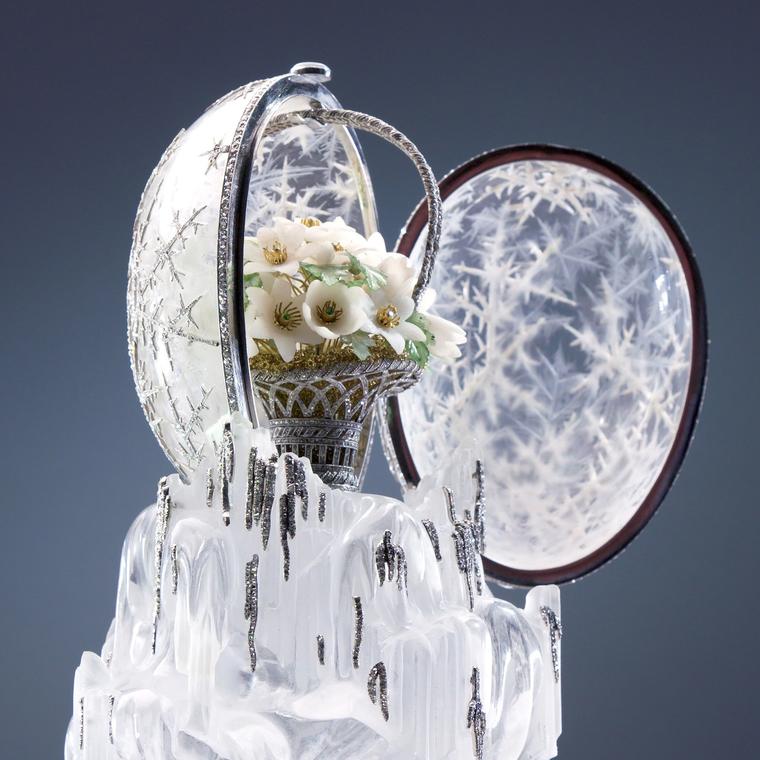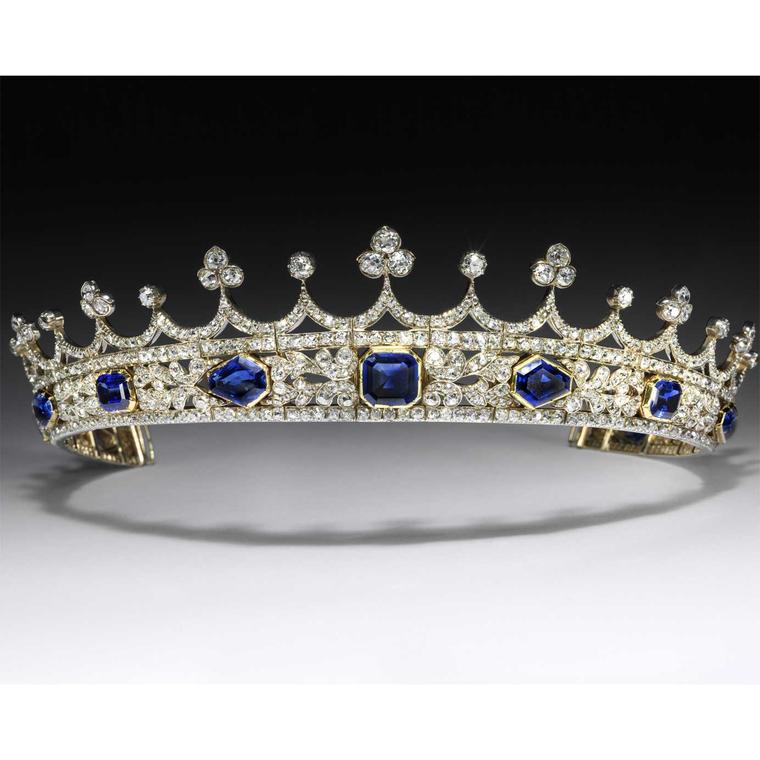
Carl Fabergé created only 50 lavishly decorated eggs that the Russian Royal family gave as extravagant Easter gifts. The eggs carried both the Christian symbolism associated with Easter and re-birth as well as romantic messages of love. The bejewelled eggs that Fabergé created for the Russian royalty are called the ‘Imperial’ eggs and were gifts to wives and mothers full of romantic and religious symbolism. Fabergé also made eggs for other wealthy clients but these are not included in the 'Imperial' category.
The first Imperial Fabergé Egg was commissioned by Tsar Alexander III as a gift for his wife the Empress Maria Feodorovna. Known as the1885 Hen Egg, it was crafted from gold and its opaque white enamelled shell opened to reveal a matt yellow gold yolk, which in turn opened to offer a superb gold hen that also opened to delight with a miniature imperial crown and a ruby pendant - both since lost. Over time, testing both the artistic and mechanical genius of Peter Carl Fabergé and his team, the eggs became increasingly more elaborate, but always with a surprise inside. Some contained miniature clocks or hand-wound automata such as the 1908 Peacock Egg. Others celebrated victories or historical moments such as the 1897 Coronation Egg or the 1900 Trans-Siberian Railway Egg.
Along with many other jewels and valuable objects, many of the Imperial Easter Eggs were confiscated by the Bolsheviks following the 1917 revolution and were lost or destroyed. The most recently re-discovered is the Third Imperial Easter Egg that came to light in 2014 and was last seen in public 122 years ago. Eight had been missing making the discovery of this egg a very exciting find of one of the great lost treasures of Imperial Russia that experts have spent a lifetime looking for. Each egg has a fascinating story of how it survived and how the Third Imperial Egg that emerged from the Mid-West of America is a tale full of intrigue. And like a true thriller, this valuable and historical object narrowly escaped being melted down. Watch the video below of my visit to Wartski's to see the egg or READ MORE HERE
So where are the Fabergé Imperial eggs now? Of the 43 eggs that have survived and been recovered, the Kremilin Armoury in Moscow has ten, the largest amount in any one place. Queen Elizabeth owns three Imperial Eggs that form part of the Royal Collection, Viktor Vekselerg, a Russian gas and oil billionaire bought nine Imperial eggs for $100 million in 2004 when Michael Forbes put them up for sale. The rest are dispersed around in museums around the world and notably the Virginia Museum of Fine Arts that has five. Now that the Third Imperial Easter Egg has been found, the hunt is still on for the remaining seven missing Eggs.

















